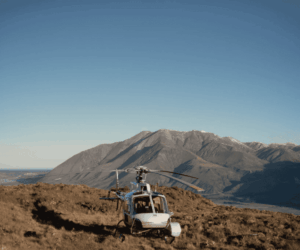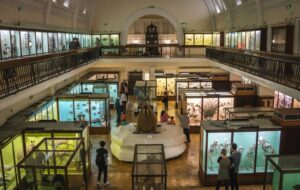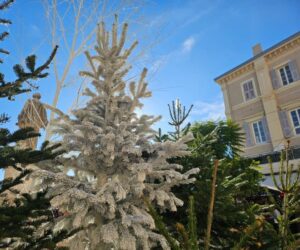The post Discovering the Ichthyosaur appeared first on Travel Nevada.
Nevadans take great pride in things that might seem a bit odd to non-dwellers.
For example, we celebrate the anniversary of our statehood—Nevada Day—as an official public holiday, complete with an old-fashioned parade in Carson City. We will brag about the unsinkable battleship USS Nevada, the only vessel to get under way during the attack on Pearl Harbor. Mark Twain’s first byline was in a Nevada newspaper, and we have more named mountain ranges than any other state.
Don’t even get us started on the proper pronunciation of Nevada.
And we have a special place in our hearts for a sea creature known as the ichthyosaur, which ruled the prehistoric oceans during the Triassic period 250 million years ago and left their fossilized remains in what is now the high desert of Nevada.
“There is a reason the ichthyosaur is the state fossil of Nevada.”
In 1977, the Nevada Legislature designated the ichthyosaur as the official state fossil, but the honors hardly stop there. The ichthyosaur is the focal point of a state park, a featured display in several state museums, the namesake of a favorite beer at one of northern Nevada’s venerable brew pubs, and the centerpiece of a new exhibit set to open at the Nevada Museum of Art in Reno.
Deep Diving
“Deep Time: Sea Dragons of Nevada” opens Sept. 7 and runs through Jan. 11, 2025. The 9,000-square-foot exhibition tells the ichthyosaur’s story through a unique blend of paleontology, art, history, and design. It is co-curated by Ann M. Wolfe, the Nevada Museum of Art’s chief curator, and Dr. Martin Sander, professor of vertebrate paleontology at the University of Bonn, Germany.
It will feature—and in some cases, debut—many never-before-seen ichthyosaur fossils, including some from an early 1900s expedition led by paleontologist Annie Alexander. There will also be specimens from Berlin-Ichthyosaur State Park near Gabbs, and fossils of a new giant species excavated in the Augusta Mountains northwest of Austin in 2011 and 2014.
Sander has been doing field work in central Nevada since 1991, drawn back time and again by the abundance of ichthyosaur fossils.
“There is a reason the ichthyosaur is the state fossil of Nevada,” Sander says.
“(This) is the place where you have the largest number of species in ichthyosaur of anytime, anyplace, and it’s the place with the largest shape diversity—large, small, large head, small head, largest body size,” explains Sander. “All the interesting parts in ichthyosaur evolution happened in the Triassic, and the hot spot is Nevada.”

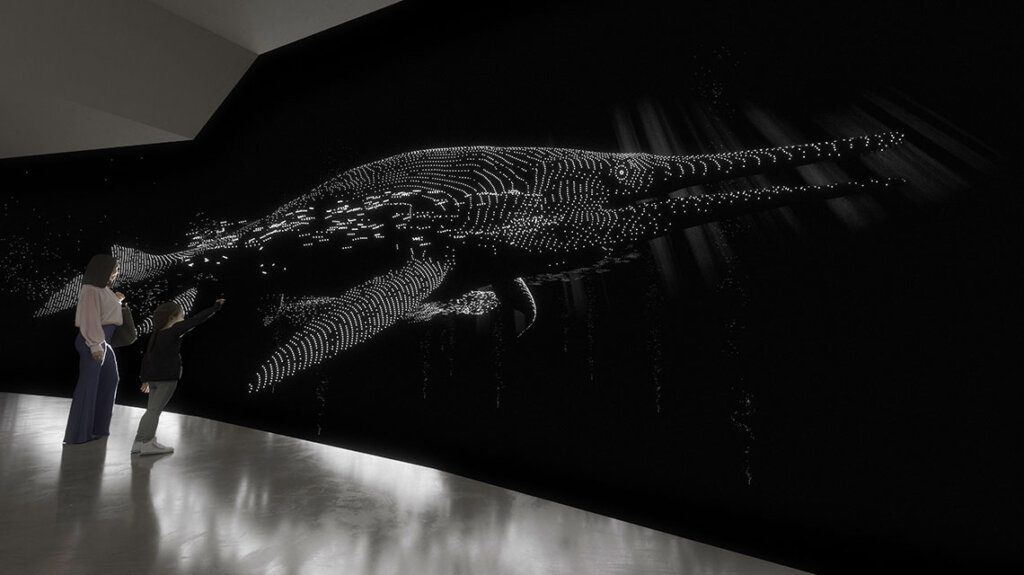
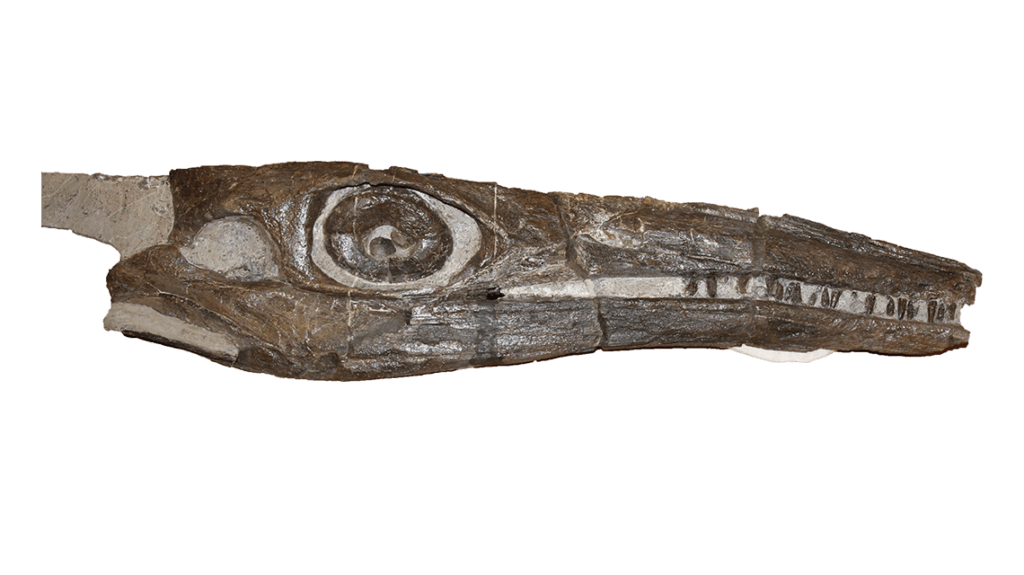
Walking Through Time
The exhibition begins with a room-sized light installation, titled “Swell” by artist Anthony McCall, that will take visitors back in time to the Triassic period. Visitors begin their journey by stepping into a darkened gallery surrounded by illuminated beams of light and a shifting veil of mist-like haze. The immersive artwork functions metaphorically as a virtual time machine that transports visitors into an ancient ocean.
In the main exhibit space, museum goers wander through displays representing Nevada mountain ranges to discover more than 20 fossil specimens excavated between 1868 and 2022. Visitors then come face-to-face with a life-sized, virtually animated ichthyosaur that responds to movement, giving visitors a chance to swim alongside the ancient reptile.
In addition to the wide display of fossils, the exhibition also includes:
- The story of fossil hunter Mary Anning, the first woman to discover an ichthyosaur fossil in Great Britain in 1811.
- Striking examples of paleoart—art based on fossil evidence. The works show how artists and scientists have worked together to imagine prehistoric creatures.
- Paleontologist Annie Alexander’s photographs and field journal pages from a 1905 expedition to Nevada’s Humboldt Range.
- Rarely seen giant ichthyosaur fossils (including a 33-foot skeleton).
- Fossils from the new Augusta Mountain species Cymbospondylus youngorum. This includes arguably the best ichthyosaur skull found. At 6.5 feet long, it shows the animal would have dwarfed a Tyrannosaurus Rex.
Honoring Connections
Alongside the ancient artifacts, the museum is releasing a children’s book titled “Annie Alexander’s Amazing Adventure: An American Fossil Expedition in Nevada” written by museum curator Wolfe with illustrations by Nevada-based artist Kate O’Hara.
The book details the adventures of Annie Alexander who, in 1905, joined an expedition to Nevada’s Humboldt Range in search of fossils. During the trip, her team excavated 25 ichthyosaur specimens, some of which were the largest and most complete of their kind ever discovered in North America.
At the time of her journey, there were few women in paleontology. Indeed, for many years, the work of both Alexander and other women researchers went unacknowledged by the scientific community. Fortunately, the groundbreaking work of these two pioneers is far more appreciated today—evident by their featured role in the exhibition.
Wolfe notes that the book is another example of how the Nevada Museum of Art exhibition shows the collaboration that has long existed between the scientific and arts communities.
“We’re creating an 84-foot long, 3-D, animated, amazing, immersive wall installation where there is an 80-foot ichthyosaur that comes to life and responds to the visitor’s movement,” she says. “The artist has been working directly with Martin Sander, so you see this collaboration between art and science unfolding before your very eyes, which is pretty cool.”
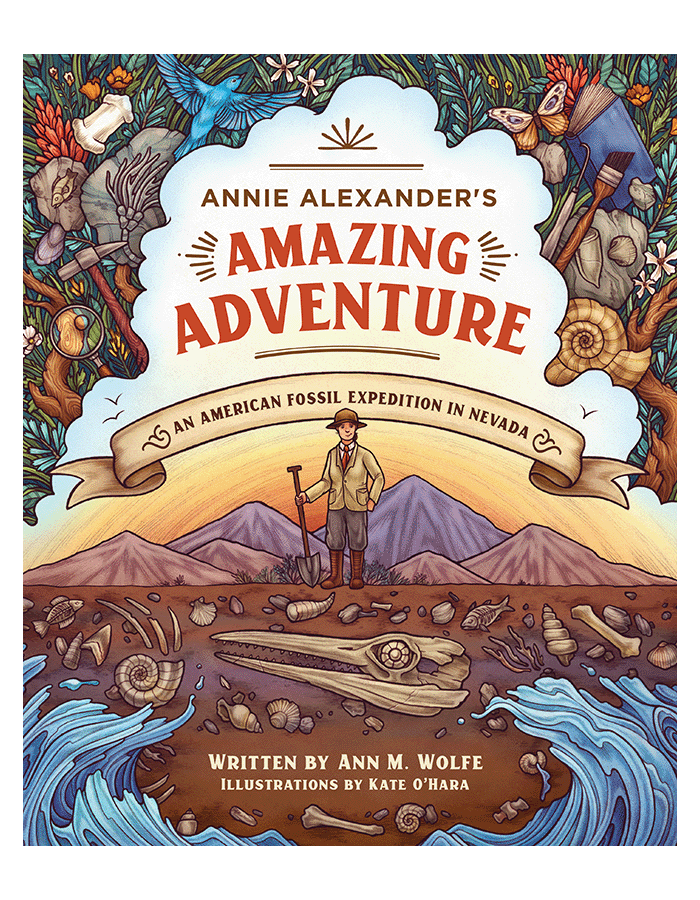
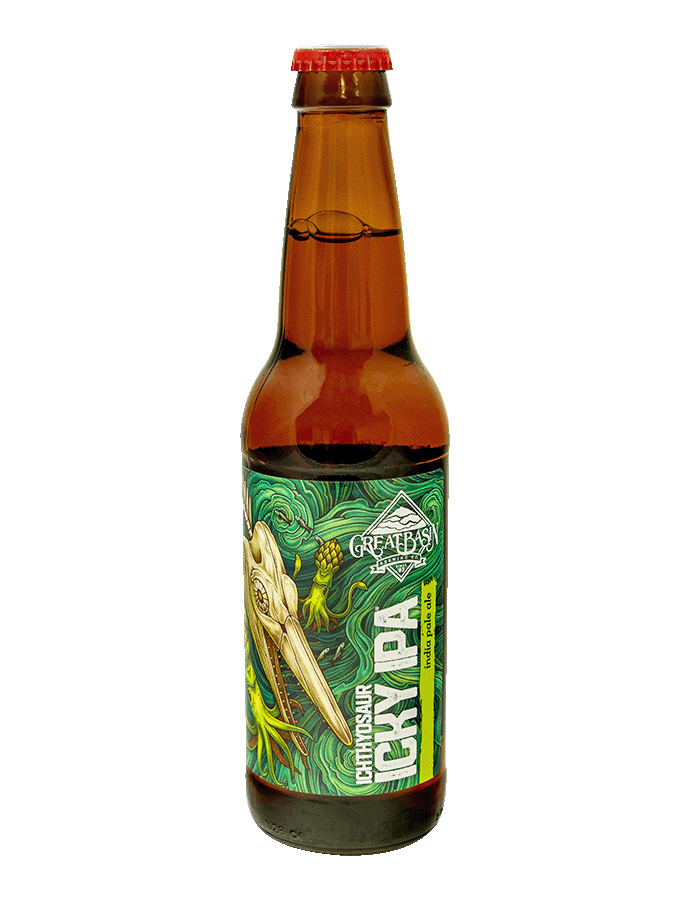
A Delicious Connection
Another not-so-ancient discovery during those digs led scientists to an enduring friendship and collaboration. It was a beer bottle from the Great Basin Brewery in Sparks—owned by Tom and Bonda Young at the time—that featured an ichthyosaur on the label.
A geologist before turning his attention to brewing, Tom Young named one of his first beers after the creature. When the Sander team sought him out, they found a willing and able partner in Young who even helped on excavations (physically and financially) and made Great Basin beer trucks available to the scientists to transport fossils and materials to and from the Natural History Museum of Los Angeles.
In turn, Sander named the new species of ichthyosaur after the Youngs: Cymbospondylus youngorum.
“The more I think about it, the cooler it is,” Tom Young says. “To think these magnificent creatures, the first giants, the first large creature on Earth came from what turned out to be Nevada.”
He is equally thrilled with the art exhibit and the auxiliary events it is bringing with it.
“My wife and I have been supporters of the Museum of Art for a long time,” he said. “I think it’s pretty cool we’re finally getting some traction in Nevada with these things.”
The post Discovering the Ichthyosaur appeared first on Travel Nevada.
This article: Discovering the Ichthyosaur has been curated from our friends at Travel Nevada and the original in it's entirety can be found here: https://travelnevada.com/arts-culture/discovering-the-ichthyosaur/
